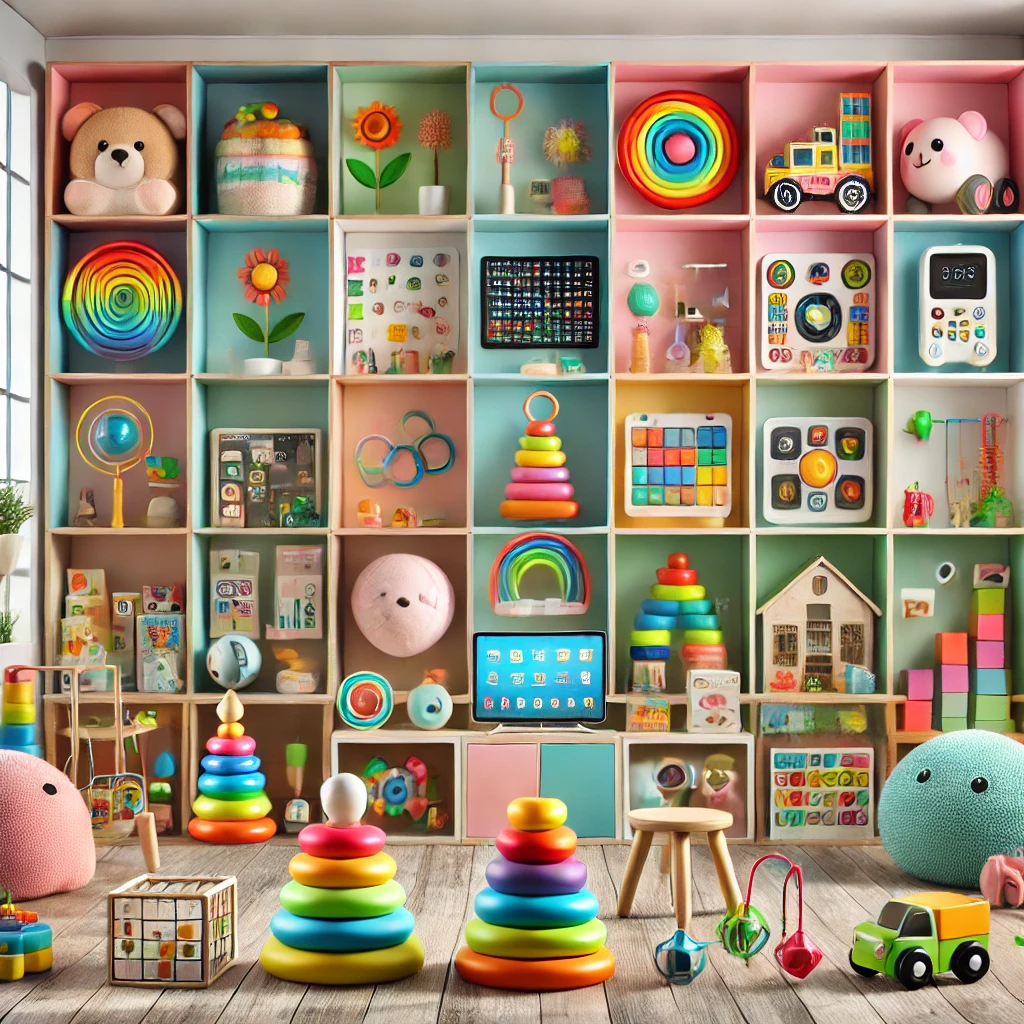
Must-Have Educational Toys for Every Age Group
Discover the best educational toys that promote learning, creativity, and cognitive development for kids of all ages.
Why Educational Toys Matter
Kids are natural learners, and the right toys can supercharge their development. Whether it’s a toddler stacking blocks or a teenager building robots, educational toys enhance critical thinking, problem-solving, and motor skills.
Best Educational Toys for Babies (0-12 Months)
1. Sensory Toys
Babies explore the world through touch, sight, and sound. Sensory toys like soft rattles, textured balls, and musical mobiles stimulate their developing senses.
2. Tummy Time Play Mats
Encouraging tummy time strengthens neck and core muscles, preparing babies for crawling. Mats with mirrors and hanging toys make the experience more engaging.
Top Picks for Toddlers (1-3 Years)
3. Building Blocks
Classic building blocks help toddlers develop fine motor skills and spatial awareness. They also encourage creativity—what starts as a simple tower can become a castle or a rocket ship!
4. Shape Sorters
These toys teach toddlers problem-solving and hand-eye coordination as they match shapes to their corresponding slots.
5. Musical Instruments
Mini keyboards, xylophones, and drum sets introduce children to music, rhythm, and coordination—plus, they’re a blast to play!
Must-Have Toys for Preschoolers (3-5 Years)
6. Puzzle Sets
Puzzles enhance cognitive development, patience, and problem-solving skills. Start with simple peg puzzles and progress to more complex jigsaw puzzles.
7. Art and Craft Kits
How to encourage creativity in children? Art supplies like crayons, watercolor sets, and modeling clay let preschoolers express themselves and refine fine motor skills.
8. STEM-Based Learning Kits
Preschoolers love hands-on learning! Science experiment kits and simple coding games lay the foundation for future learning.
Best Educational Toys for Elementary Kids (6-10 Years)
9. Science Kits
From growing crystals to making slime, science kits keep kids engaged while teaching them about chemistry and physics.
10. Interactive Globes and Maps
Geography comes to life with talking globes and interactive maps, making learning about the world fun.
11. Board Games for Critical Thinking
Chess, Scrabble, and strategy games teach problem-solving and teamwork—perfect for family game nights!
Educational Toys for Tweens and Teens (11+ Years)
12. Robotics and Coding Kits
Best educational tools for kids in 2025? Robotics kits and coding games introduce teens to programming and engineering in an exciting way.
13. 3D Puzzle Models
Building 3D puzzles, from famous landmarks to functional mechanical models, enhances patience and critical thinking.
14. DIY Electronics Kits
Teens can explore engineering concepts by building their own circuits and gadgets—practical advice for raising confident children in the digital age.
How to Maintain Work-Life Balance as a Parent
15. The Role of Play in Parenting
Struggling with work-life balance? Playing with your child not only strengthens bonds but also creates a positive learning environment at home. Schedule screen-free playtime and explore affordable ways to create fun learning activities together.
Final Thoughts
Choosing the right educational toys can make a world of difference in a child’s learning journey. From sensory toys for babies to advanced robotics kits for teens, each stage of development benefits from interactive play. So, invest in toys that foster creativity, problem-solving, and lifelong learning!
FAQs
1. What are the best apps for helping kids with homework?
Apps like Khan Academy Kids, ABCmouse, and Duolingo make learning engaging and interactive for children of all ages.
2. How can I encourage my child to be more creative?
Provide open-ended toys like LEGO, art supplies, and storytelling prompts to spark imagination and creative thinking.
3. What are the top tips for managing screen time?
Set daily limits, use parental controls, and encourage offline play to create a healthy balance between digital and physical activities.
4. How can I create a positive learning environment at home?
Designate a quiet study area, incorporate hands-on learning tools, and make learning fun with interactive games and activities.
5. What are the top parenting challenges and how to overcome them?
Balancing work-life, managing screen time, and effective communication with teenagers are common challenges. Set clear boundaries, create routines, and spend quality time together.